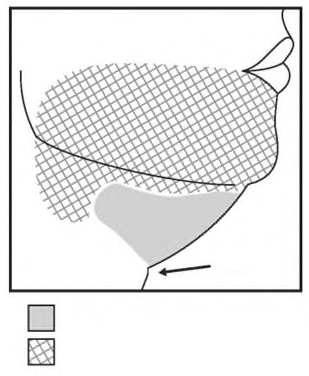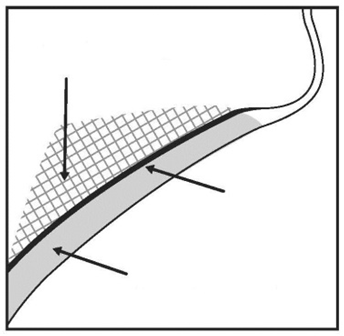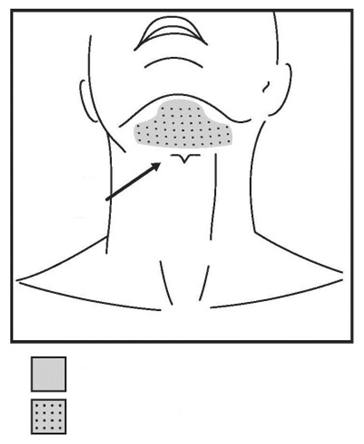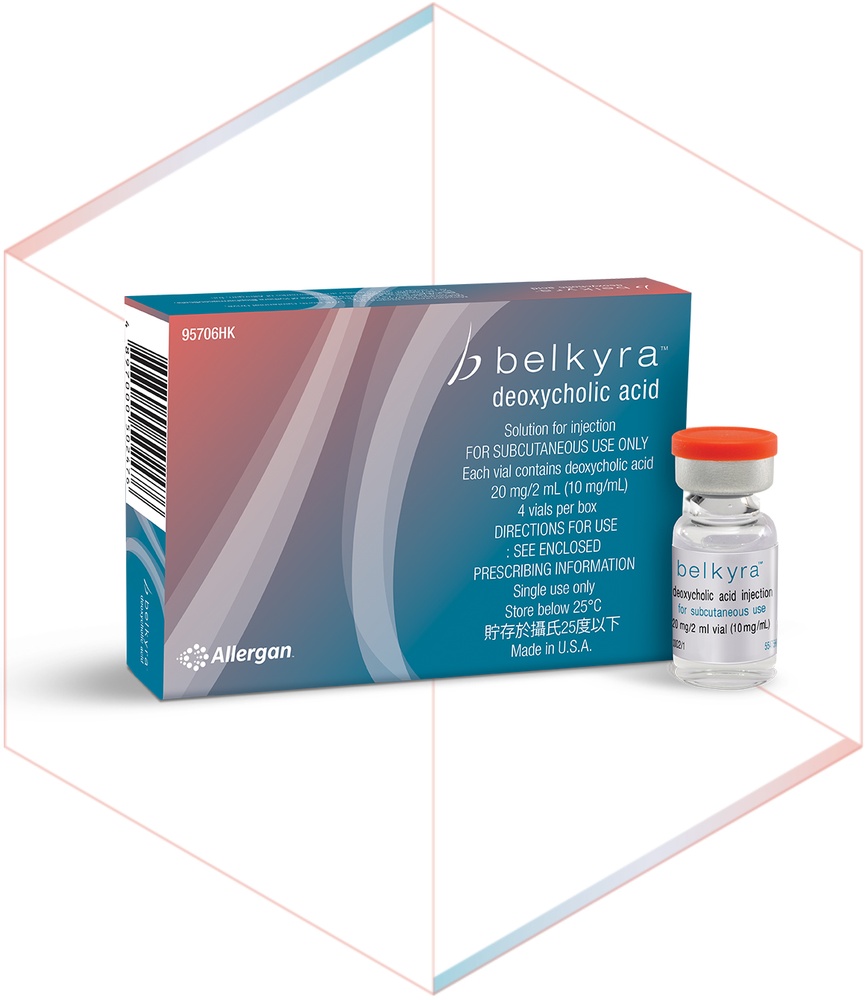
How to use Belkira
Package Leaflet: Information for the User
Belkyra, 10 mg/ml, Solution for Injection
Deoxycholic acid
Read all of this leaflet carefully before using this medicine because it contains important information for you.
- Keep this leaflet. You may need to read it again.
- If you have any further questions, ask your doctor, pharmacist, or nurse.
- This medicine has been prescribed for you only. Do not pass it on to others. It may harm them, even if their signs of illness are the same as yours.
- If you get any side effects, talk to your doctor, pharmacist, or nurse. This includes any possible side effects not listed in this leaflet. See section 4.
Contents of the Pack
- 1. What is Belkyra and what is it used for
- 2. Important information before using Belkyra
- 3. How to use Belkyra
- 4. Possible side effects
- 5. How to store Belkyra
- 6. Contents of the pack and other information
1. What is Belkyra and what is it used for
The active substance of Belkyra is deoxycholic acid. Deoxycholic acid is naturally produced in the human body to aid in the digestion of fats.
Belkyra is used in adults for the treatment of excess fat under the chin (double chin), when it has a significant impact on the patient's psychological state.
Belkyra contains deoxycholic acid that is not of human or animal origin and is identical to the naturally occurring deoxycholic acid. Belkyra is an injectable medicine given by a doctor or nurse.
2. Important information before using Belkyra
When not to use Belkyra:
Warnings and precautions
Before starting treatment with Belkyra, discuss it with your doctor, pharmacist, or nurse.
Before each treatment, the doctor or nurse will check your health. Before each treatment, tell your doctor or nurse about any illness you have.
The doctor or nurse will pay special attention to the area around the neck, as it is necessary to exercise special caution in cases of diseases or previous surgeries (e.g., scarring, liposuction, swallowing difficulties, thyroid enlargement, or lymph node enlargement).
- Temporary damage to the jaw nerve may occur, leading to asymmetric smile or facial muscle weakness.
- Damaged tissue around the treatment area (e.g., skin erosion, ulceration, skin necrosis) may occur. This may lead to scarring.
- Infection around the treated area may occur, which may require additional treatment. If redness or pain occurs, talk to your doctor, pharmacist, or nurse.
Belkyra should not be used if you are obese or have body dysmorphic disorder (distorted body image perception).
Children and adolescents
This medicine is not intended for use in children and adolescents.
Belkyra and other medicines
Tell your doctor or nurse about all medicines you are taking or have recently taken, as well as any medicines you plan to take.
Pregnancy and breastfeeding
The use of Belkyra in pregnant or breastfeeding women is not known. As a precaution, the use of Belkyra is not recommended during pregnancy.
If you are pregnant or breastfeeding, think you may be pregnant, or are planning to have a baby, ask your doctor or nurse for advice before using this medicine.
Driving and using machines
Belkyra is unlikely to affect your ability to drive or use machines.
Belkyra contains sodium
This medicine contains 4.23 mg of sodium (the main component of common salt) per 1 ml. This corresponds to 0.2% of the maximum recommended daily intake of sodium in the diet for adults.
3. How to use Belkyra
How to administer Belkyra
Belkyra will be administered by a doctor (or, if permitted by national regulations, by a qualified healthcare professional under the supervision of a doctor) directly under the skin (subcutaneous administration).
Belkyra will be injected in small amounts in several places in the treatment area, i.e., in the fatty tissue located directly under the skin in the chin area.
Before and after the injection, the doctor or nurse may take certain actions to alleviate pain.
Recommended dose
The doctor will decide what amount of Belkyra to inject.
During one treatment, the patient will receive multiple injections. The total number of injections and the number of treatments needed to achieve a satisfactory response to treatment depend on the individual patient's needs and will be determined by the doctor. Treatment can be repeated several times, but no more than 6 treatments should be performed. The interval between consecutive treatments should be at least 4 weeks.
Overdose of Belkyra
Administration of a larger amount of Belkyra than recommended may lead to increased side effects (see section 4). If this happens, talk to your doctor or nurse.
4. Possible side effects
Like all medicines, this medicine can cause side effects, although not everybody gets them.
- Temporary damage to the jaw nerve may occur, leading to asymmetric smile or facial muscle weakness.
- Damaged tissue around the treatment area (e.g., skin erosion, ulceration, skin necrosis) may occur. This may lead to scarring.
If you experience any of the above side effects, talk to your doctor or nurse immediately.
The following is a list of observed side effects, along with their frequency:
Very common(may affect more than 1 in 10 people):
- Injection site reactions:
- pain
- swelling and bruising
- sensory symptoms (paresthesia): numbness, decreased sensation, tingling, prickling, and unusual sensation
- small, round nodules (nodules)
- bruising
- hardening or thickening of tissue (induration)
- redness of the skin (erythema)
- itching
Common(may affect up to 1 in 10 people):
- Injection site reactions:
- bleeding
- discomfort
- warmth
- skin color change
- nerve damage around the jaw
- skin tension
- swallowing difficulties (dysphagia)
- nausea (nausea)
- headache
Uncommon(may affect up to 1 in 100 people):
- taste disorders (dysgeusia)
- speech difficulties (dysphonia)
- Injection site reactions:
- hair loss (alopecia)
- itchy rash (urticaria)
- skin wounds (ulcers)
- allergic reaction (hypersensitivity)
- scarring
Frequency not known(cannot be estimated from the available data):
- decreased sensation in the oral cavity or abnormal sensation in the oral cavity (e.g., lips, tongue) [oral hypoesthesia, paresthesia (oral paresthesia)]
- injection site reaction (see "Warnings and precautions"):
- decreased sensitivity to touch or sensory disturbances in the cheek area
- tissue damage and cell death (necrosis) around the injection site
- infection, including redness, swelling, or pain (cellulitis) or abscess formation
- vessel injury due to accidental injection into an artery or vein
Most observed side effects resolved within a 4-week interval between treatments. However, some injection site reactions may persist for a longer period.
Reporting side effects
If you experience any side effects, talk to your doctor, pharmacist, or nurse. Side effects can be reported directly to the Department of Drug Safety Monitoring of the Office for Registration of Medicinal Products, Medical Devices, and Biocidal Products
Al. Jerozolimskie 181C
02-222 Warsaw
Tel.: +48 22 49 21 301
Fax: +48 22 49 21 309
Website: https://smz.ezdrowie.gov.pl
Side effects can also be reported to the marketing authorization holder.
By reporting side effects, you can help provide more information on the safety of this medicine.
5. How to store Belkyra
Keep this medicine out of the sight and reach of children.
Do not use this medicine after the expiry date which is stated on the label and carton after "EXP". The expiry date refers to the last day of that month.
There are no special storage instructions for this medicine.
After opening, the solution for injection should be used immediately.
Do not use this medicine if you notice any particles in it.
6. Contents of the pack and other information
What Belkyra contains
- The active substance is deoxycholic acid. 1 ml of solution for injection contains 10 mg of deoxycholic acid. 1 vial of 2 ml contains 20 mg of deoxycholic acid.
- The other ingredients are: disodium phosphate anhydrous, sodium chloride, hydrochloric acid (for pH adjustment), sodium hydroxide (for dissolution and pH adjustment), water for injections.
What Belkyra looks like and contents of the pack
Belkyra is a clear, colorless, and sterile solution for injection.
Pack size:
The pack contains vials of 2 ml solution for injection, placed in a carton.
The vial is made of type I glass, with a rubber stopper and an aluminum seal with a flip-top cap made of polypropylene.
Marketing authorization holder
AbbVie Sp. z o.o.
ul. Postępu 21B
02-676 Warsaw
tel. 22 372 78 00
Manufacturer/Importer
Allergan Pharmaceuticals International Ltd.
Clonshaugh Business & Technology Park,
Dublin 17,
D17 E400,
Ireland
Date of last revision of the leaflet: 04/2023
-----------------------------------------------------------------------------------------------------------------------------
Information intended for healthcare professionals only:
Before using the solution for injection, it should be visually inspected. Only a clear, colorless, and particle-free solution is suitable for use.
Dosing
The total injected volume and the number of treatments should be tailored to the individual patient's submental fat distribution and treatment goals.
0.2 ml (2 mg) of the medicinal product should be injected per injection site, spaced 1 cm apart. During one treatment, the patient should not receive more than the maximum dose of 10 ml (100 mg of deoxycholic acid, corresponding to 50 injections).
Up to 6 treatments can be performed. In most patients, improvement is seen after 2-4 treatments. The interval between consecutive treatments should be at least 4 weeks.
In order to improve patient comfort during injections, healthcare professionals may decide to use oral pain medications or non-steroidal anti-inflammatory drugs (NSAIDs), administer topical or injectable anesthetics (e.g., lidocaine) for local anesthesia, and/or cool the injection sites using gel cooling pads.
Method of administration
The medicinal product is intended for subcutaneous use only.
Belkyra is available in ready-to-use vials for single use. Before use, the vial should be gently rotated several times. Do not dilute.
The Belkyra medicinal product should be prepared for injection as follows:
- 1. Remove the flip-off cap from the vial and wipe the injection site on the vial with a disinfectant. Do not use if the vial, seal, or flip-off cap is damaged.
- 2. Attach a large-diameter needle to a sterile, single-use 1 ml syringe.
- 3. Insert the large-diameter needle into the injection site on the vial and draw 1 ml of the Belkyra medicinal product into the 1 ml syringe.
- 4. Replace the large-diameter needle with a 30 G (or smaller) 0.5-inch needle. Before injecting the medicinal product into the subcutaneous fat layer, remove any air bubbles from the syringe cylinder.
- 5. To draw the remaining medicinal product from the vial, repeat steps 3 and 4.
Belkyra should only be administered by qualified doctors who have the necessary experience in performing the procedure and knowledge of the anatomy of the submental area. In countries where permitted by regulations, Belkyra may be administered by qualified healthcare professionals under the supervision of a doctor. The safety and efficacy of Belkyra depend on proper patient selection, which includes knowledge of the patient's medical history, including previous medical interventions and their potential impact on the anatomy of the neck area.
Caution should be exercised when using Belkyra in patients with excessive skin laxity, prominent platysma, or other conditions where reduction of submental fat may lead to an undesirable outcome.
To perform the injection of Belkyra, the needle should be placed perpendicular to the skin.
Proper placement of the needle in relation to the jaw is crucial, as it reduces the risk of marginal mandibular nerve injury - a motor branch of the facial nerve. Nerve damage can lead to asymmetric smile due to weakness of the depressor anguli oris muscle.
To avoid marginal mandibular nerve injury:
- Do not inject above the lower jaw line.
- Do not inject in the area defined by a line 1-1.5 cm below the lower jaw line (from the jaw angle to the chin).
- Inject Belkyra only in the targeted submental fat treatment area (see Figures 1 and 3).
Figure 1. Avoiding the marginal mandibular nerve area

Avoid injecting in the platysma muscle. Before each treatment, the submental area should be palpated to ensure that there is sufficient fat tissue and to identify the subcutaneous fat tissue between the skin and the platysma muscle in the targeted treatment area (Figure 2).
Figure 2. Cross-sectional view of the platysma muscle area

The planned treatment area should be marked with a surgical marker and a 1 cm grid should be placed to mark the injection sites (Figures 2 and 3).
Figure 3. Treatment area and injection pattern

Do not inject Belkyra outside the designated areas.
Each vial is intended for use in one patient only. After use, any unused product should be discarded.
- Country of registration
- Active substance
- Prescription requiredYes
- Manufacturer
- ImporterAllergan Pharmaceuticals International Ltd. Clonshaugh Business & Technology Park
- This information is for reference only and does not constitute medical advice. Always consult a licensed doctor before taking any medication. Oladoctor is not responsible for medical decisions based on this content.
- Alternatives to BelkiraDosage form: Solution, 20 mg/mlActive substance: minoxidilManufacturer: Industrial Farmaceutica Cantabria, S.A.Prescription not requiredDosage form: Solution, 50 mg/mlActive substance: minoxidilManufacturer: Industrial Farmaceutica Cantabria, S.A.Prescription not requiredDosage form: Aerosol, 50 mg/mlActive substance: minoxidilManufacturer: mibe GmbH Arzneimittel Sun-Farm Sp. z o.o.Prescription not required
Alternatives to Belkira in other countries
The best alternatives with the same active ingredient and therapeutic effect.
Alternative to Belkira in Espanha
Alternative to Belkira in Ukraine
Online doctors for Belkira
Discuss dosage, side effects, interactions, contraindications, and prescription renewal for Belkira – subject to medical assessment and local rules.







